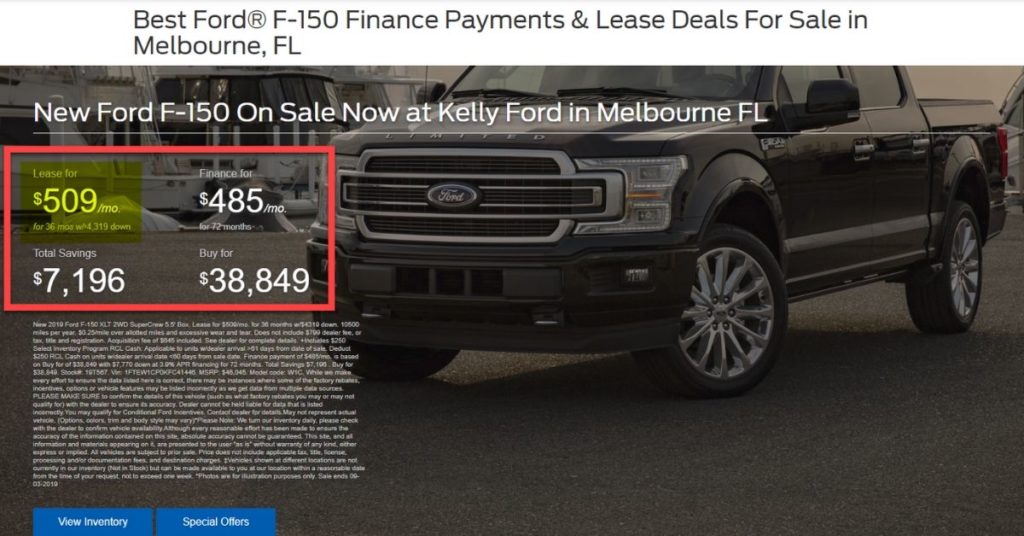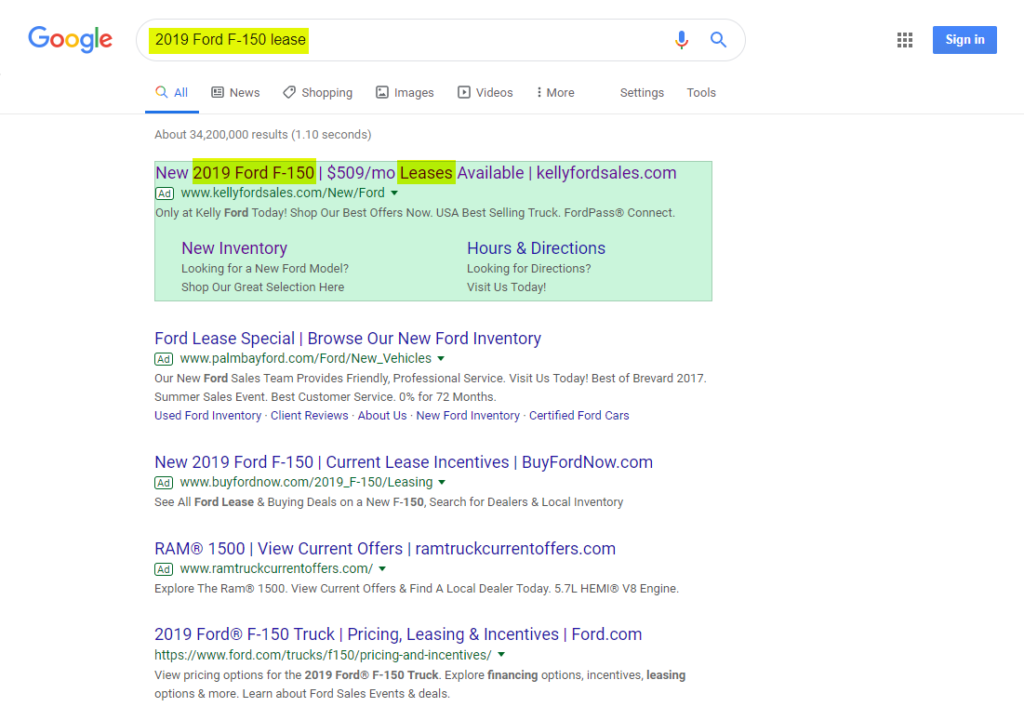Determining the recipe for success for your Google Ads campaigns can be a challenge if you don’t have the right tools or knowledge at your disposal. Everyone seems to have their own set of best practices or tricks to game the system. However, at Dealer Teamwork, we believe learning directly from the source (in this case, Google) is the best way to be successful with Google Ads.
As a Google Premier Partner, we have access to the best resources to learn the latest tactics for creating successful ads on Google. Here’s what Google says you need to do to create successful ads:
1. Highlight what makes you unique
As a car dealership, you don’t make cars, you sell and service them. Figure out what you have to offer and highlight items that make you unique within your ads. These are the reasons why people will want to click on your ad vs. clicking on someone else’s. Always differentiate yourself from the competition.
2. Include prices, promotions, and exclusives

A Google study found that 90% of car buyers rely on online research before making a buying decision. In addition, because car shoppers respond to ads that speak to their needs, automotive dealers need to show meaningful transactional data in ads because this is how people buy vehicles and services now. Include things such as monthly payments, APR, incentives and discounts. Optimizing ads with relevant pricing data helps shoppers find the answers they’re looking for in critical car buying decision moments.
3. Empower customers to take action
Make your ads pop with compelling calls to action (CTAs). Leveraging phone number extensions and other ad extension formats from Google provides more engagement opportunities for car shoppers. Whether you are trying to sell a vehicle or offering a service, use a specific call to action, so the next step is clear to the consumer.
4. Include at least one of your keywords

Including at least one of your keywords in your ad copy helps improves the likelihood that your ad will match the shopper’s search intent. This simple optimization tactic should also be carried over to the landing page of your ad. For example, if you’re using the keyword “F-150 lease” include that phrase in your headline (i.e. Ford F-150 lease for $189/Mo…). This will help enhance the relevancy of your ad for Google and the potential car buyer while lowering ad costs.
5. Match your ad to your landing page
If someone is clicking on an ad that states “$199/mo lease for a Ford Fusion”, they expect to see a Ford Fusion lease offer for $199/mo on your landing page. Modern car shoppers expect transparency. Consequently, it’s more essential than ever to match your advertising message with the message on the corresponding landing page.
Car shoppers are more likely to engage with your ads when those ads are of higher quality. Remember, higher quality ads drive people to a landing page with a consistent message. Be transparent and match your marketing messaging.
6. Appeal to customers on mobile devices
According to Google, “People seeing your ads on mobile are more likely to want to know where you are, or to call you.” Make sure you’re including both the location and call extension features of Google Ads in your campaign ads.
Each of these extension tools can be powerful assets when you consider that 60% of consumers searching for vehicles on a mobile device would call a dealership from a call extension.
You may even want to think about having different ads solely devoted to mobile audiences that are directly linked to the mobile version of your landing pages.
Whatever you do, don’t forget to optimize your ads for your mobile customers. Make the experience as easy and mobile-friendly as possible to maximize your chances of having the car shopper reach out to you. Include mobile CTAs such as “Call Today.” Use call extensions and include a call tracking solution to measure all activity.
7. Experiment
You never know what works until you try. Your Google Ads strategy should embrace this principle by evolving based on what works for your dealership. For example, you could create three or four different ads for each ad group and see which one performs the best.
There is no “set-it-and-forget-it” digital strategy because the digital realm is constantly evolving. You need to monitor and maintain your campaigns weekly, if not daily, if you want to succeed and outperform your competitors.
Dealer Teamwork follows these 7 Google best practices with our search engine marketing (SEM) campaigns. You can learn more about how our paid search marketing works here.



